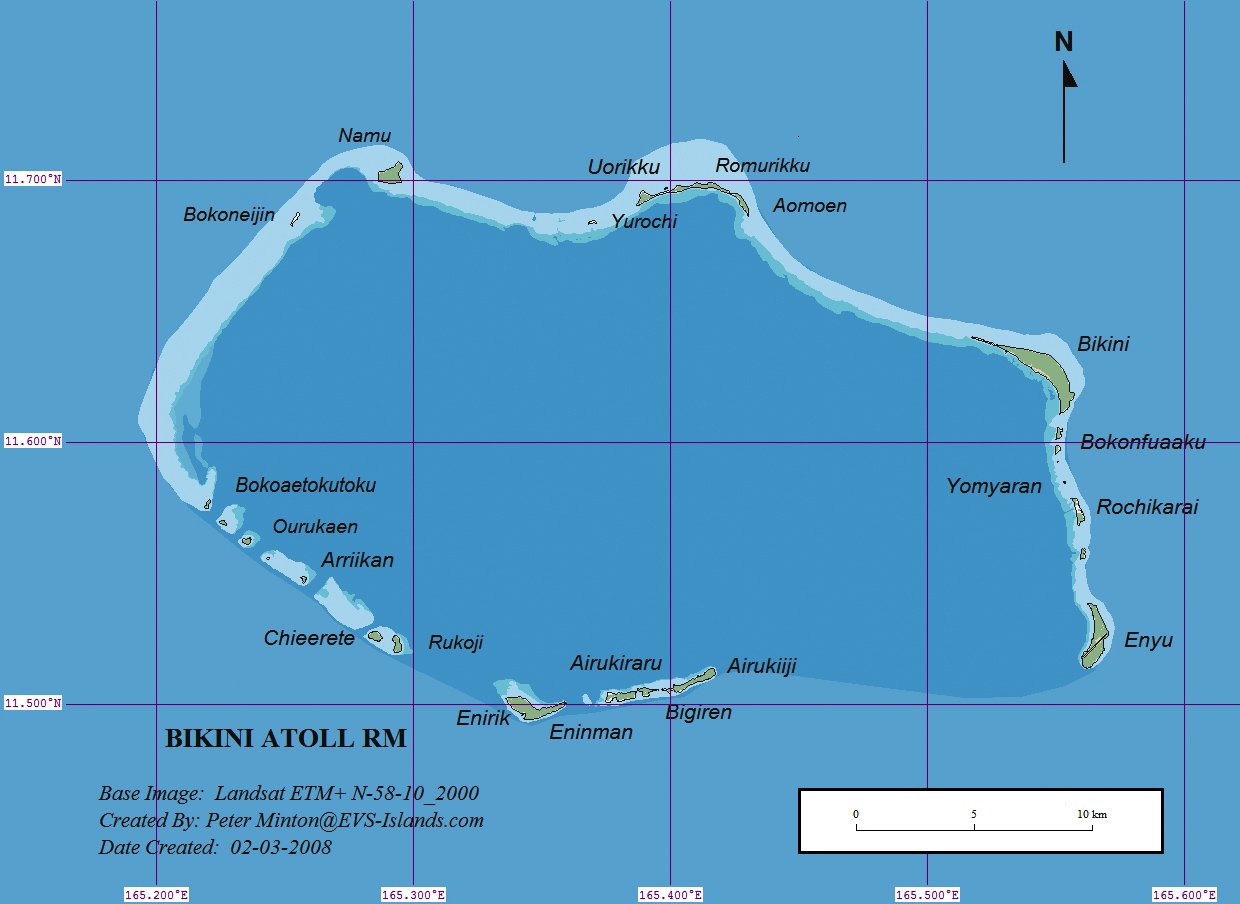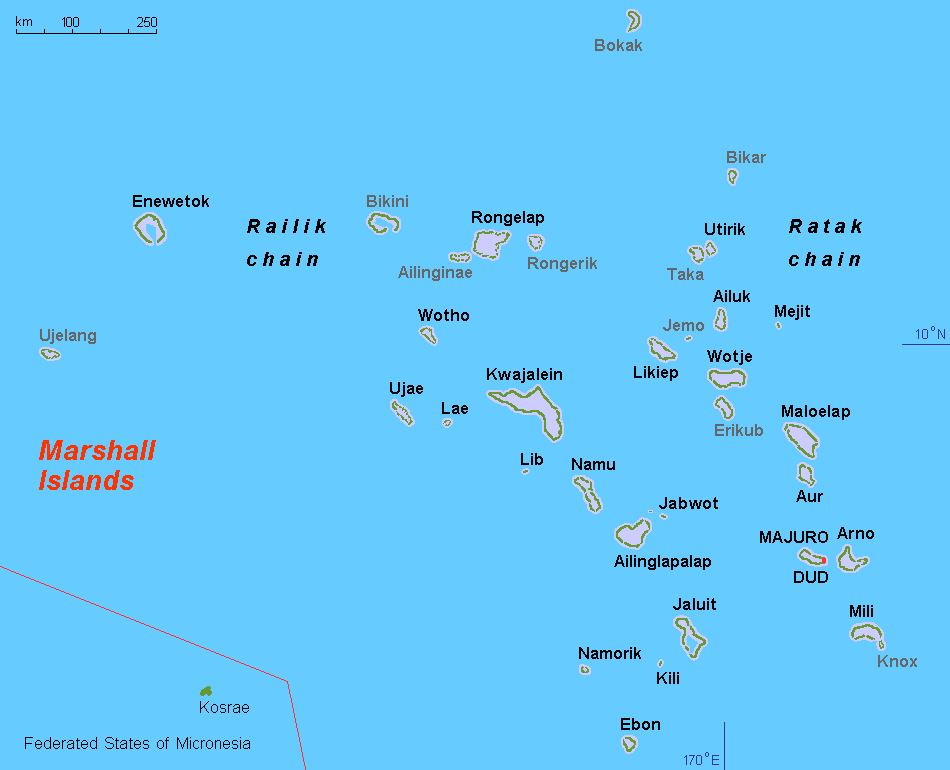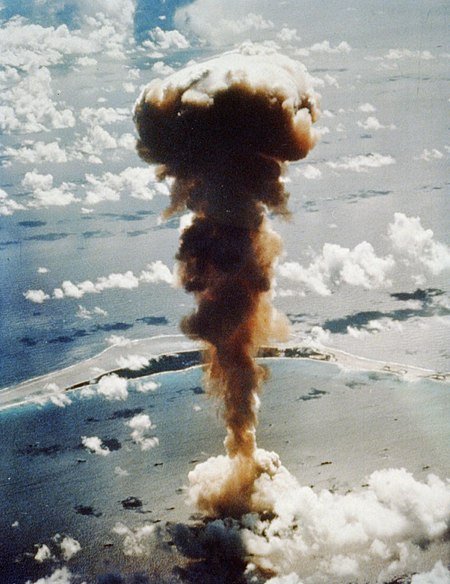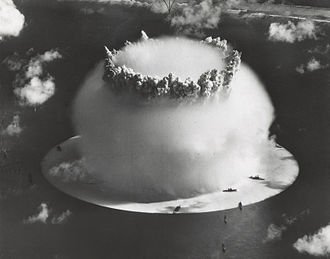Bikini Bottom
Everyone knows who Spongebob Square Pants is - the friendliest and funniest goofy goober in all of the ocean, of course! But not everyone knows that his home in Bikini Bottom is a real place, and how it got there is a dark and shocking story. Did you ever wonder as a kid (if you grew up in the Golden Era of cartoons) how there could be talking sponges, fish, and other aquatic creatures at the bottom of the ocean, living in a quaint little town called Bikini Bottom? Me too. And since we have yet to discover any talking animals in the Animal Kingdom born of natural selection, there can only be one kind of man-made force capable of producing such strange and mutated sea life… You might be thinking “obviously it was the advances in animation technology that produced these imaginary creatures for the enjoyment of the public and the generation of advertisement revenue.” And to that I would say, “well technically yes, but there is another possibility!” Any ideas?
What about… A nuclear bomb.
You might be shocked to learn that the United States detonated a whopping 23 nuclear weapons in the Marshall Islands, on an atoll just a few hundred miles Northwest of our home on Kwajalein. The name of that atoll - Bikini.
Even though house parties are popular here on Kwaj, we haven’t yet gone knocking on that Pineapple Under the Sea to visit our new neighbor, Spongebob. But that’s mostly due to the radiation exposure and environmental contamination which keep the tourists away and make Bikini Atoll still uninhabitable to humans, more than 60 years later. There are some signs, however, that the marine life is actually thriving there, possibility because of its new status as an impromptu sanctuary and that all of the unhealthy and mutated fish may have died off decades ago. Except for Spongebob and friends, of course!
So why did the U.S. conduct so many nuclear tests at Bikini Atoll? Nations in Great Power competition can do incredible things, like put a man on the moon, and they can do disastrous things, like detonate 80 megatons worth of explosive power in a tropical paradise. The remote location and sparse population of the Marshall Islands made it attractive as a testing site for a growing nuclear arms race with the Soviet Union. The first series of nuclear bombs detonated by the U.S. were done so under Operation Crossroads in 1946. Able was the first weapon test of the operation (left), dropped from an aircraft and detonated 520 feet above a target fleet. Baker (right) was second, suspended from a barge and detonated under water.
Operation Castle was the second series of nuclear test beginning in 1954. The first weapon under test, a hydrogen bomb named Castle Bravo, used a new dry-fuel thermonuclear design and was detonated at dawn on March 1, 1954. Scientists predicted an explosive yield of 6 megatons of TNT. What they actually got was 15 megatons - 1,000 times more powerful than the bombs dropped on Hiroshima and Nagasaki. The test was intended to be a classified secret by the U.S., but the fallout and radioactive contamination was so widespread, reaching Australia, India, and Japan, that it became an international incident. As the fallout continued to spread locally, Marshallese inhabitants of the of the Rongelap, Rongerik Atolls were evacuated two days after the detonation. Residents on the Utrik Atoll were evacuated a day later. Many of the evacuated quickly began to show signs of acute radiation syndrome, as the irradiated debris, ash, and pulverized coral fell on them like snow. There are stories that they would catch it on their tongues like snow flakes, not knowing the danger. Nearly all residents within the fallout field experienced symptoms of radiation sickness, which included itchiness and sore skin, vomiting, fatigue, burning eyes, and swelling of the neck, arms and legs. They were relocated to Kwajalein for medical treatment.
Castle Bravo detonation
The U.S. would go on to test 20 more nuclear weapons on Bikini Atoll, yielding almost 80 megatons of TNT worth of explosive power - equivalent to more than 3,000 Baker detonations. The native Marshallese would continue to be displaced, with promises that they would one day be able to return to their home on Bikini. In the 1970’s, roughly 100 people ventured back to Bikini to build and re-establish their homes, however, further testing showed persistent and severe contamination well beyond the accepted safe levels for humans. These courageous Marshallese were forced to evacuate again and are still not able to return.
The Hawaiian and the Resettlement Trust Funds for the People of Bikini were created by the United States, totaling more than $100 million to compensate and resettle the displaced islanders, and repair and rebuild homes and facilities. The health impacts on the population, however, are not so easily compensated. Residents who experienced the radiation exposure first-hand from the fallout of Castle Bravo had a much greater risk of developing various forms of cancer, on top of the immediate effects of the radiation sickness. The reproductive systems of irradiated women were also disrupted, with increased reports of stillbirths and birth defects. It’s claimed that even today the population of the Marshall Islands has a much higher risk of developing many different forms of cancer than the general U.S. population.
The U.S. is still engaged and committed to compensating and making reparations to the Marshallese people for the damage caused by the nuclear testing. Under the Compact of Free Association agreement, the Marshallese people can move to and obtain jobs in U.S. which many are taking advantage of. And although Spongebob has retired from his acting career, I hear rumors around the island that he his happy and healthy in Bikini Bottom. It’s interesting how sometimes, behind an innocent and funny character like Spongebob Square Pants, you find a dark side to their origin story.





